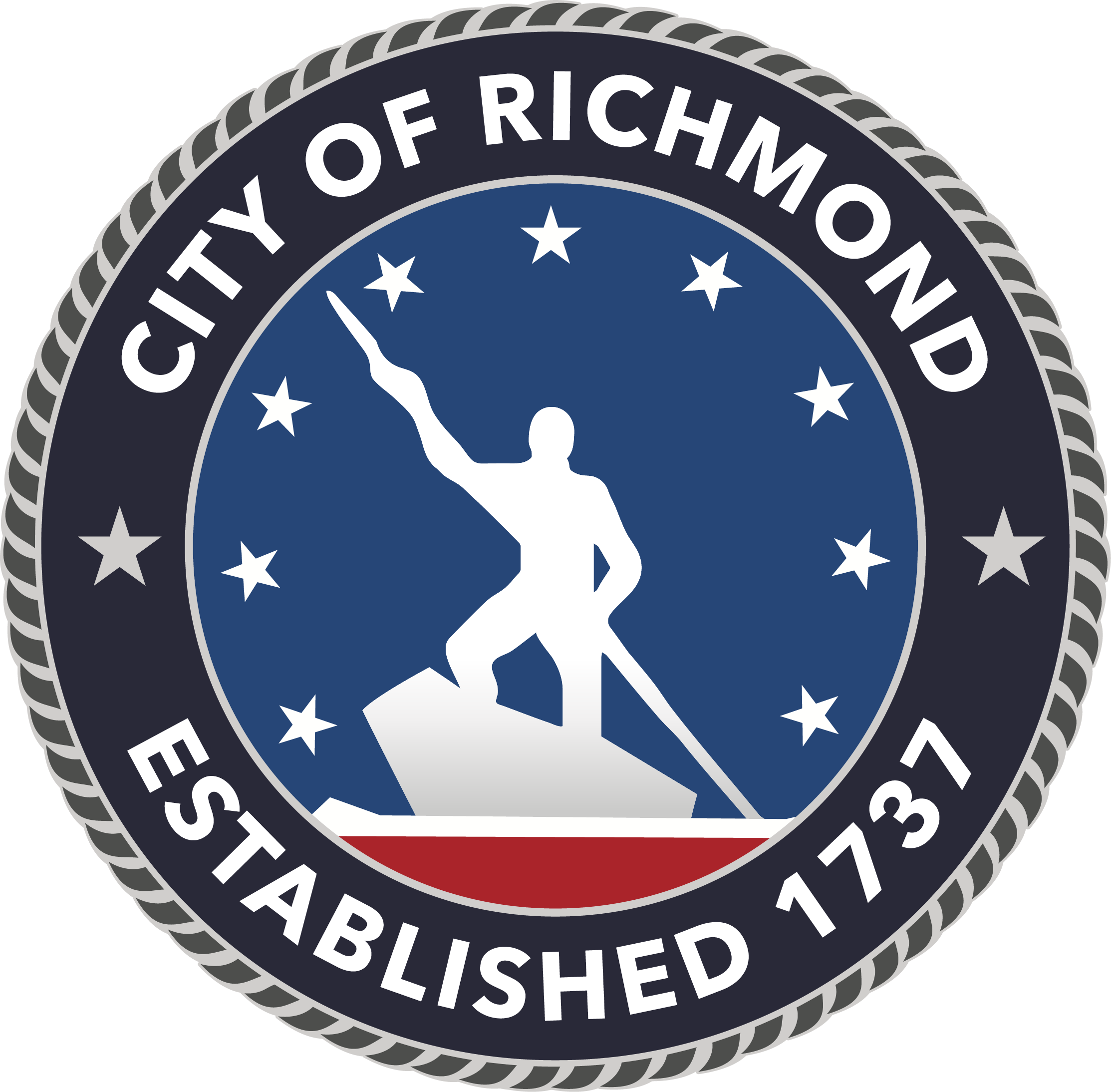Dironna Moore Clarke
Deputy Director, Department of Public Works
Address:
1500 E Franklin St
Richmond, VA
23219 USA
Hours: Mon - Fri (8 a.m. - 5 p.m.)
Phone No. 804-646-6430
Email: Ask Public Works

The Fall Line Trail (FLT) is a regional multi-use trail that was conceptualized in 2019. The Fall Line Trail will connect Petersburg to Ashland, through the heart of Richmond. The trail provides, through a multi-jurisdictional trail system, opportunities for active transportation, recreation, and economic development across the region.
The full Fall Line Trail Public Engagement Plan can be found at the link below:
Use the link below to read how the Fall Line Trail will benefit Richmond's economy.
Use the link below to read about how trees will be preserved along the Fall Line Trail.
The Feasibility Study for the Hermitage Road Segment of the Fall Line Trail can be found below.
The alternate routes analysis for the Bryan Park segment of the Fall Line Trail can be found here.
The 13-mile portion of the Fall Line Trail through the City of Richmond starts in Bryan Park from a connection in Henrico County. At Bryan Park there will be a trailhead providing the amenities of restrooms and water fountains as well as a bicycle repair vending machine and air for tires.
Q1: What type of public outreach has been done about this project?
A: On April 29, 2022, at 2pm, The Office of Equitable Transit and Mobility (OETM), the Department of Parks, Recreation, and Community Facilities (PRCF), and members of the Friends of Bryan Park (FoBP) met on site to walk the potential routes being considered for the Fall Line Trail (FLT). Three potential routes were discussed and walked. The route was chosen over the Virginia Department of Transportation (VDOT) proposed route and a third potential route on Jordan's Branch Lane due to length, budget, design requirements, slope, location of park amenities, and a current lack of off-road connectivity between park amenities among other factors.
Between June 2023 and September 2023, public surveys were conducted for the citywide Richmond Connects Strategies Multimodal Transportation Plan. These surveys asked the public for their feedback on draft recommendations. The surveys presented different recommendations for each area of the city. The Fall Line Trail was one of 8-16 draft recommendations in five areas of the city. In the survey area that included Bryan Park, 62% of all survey respondents said that the Fall Line Trail is a high priority for improving transportation equity. Public support for the Fall Line Trail in this area was highest among respondents under age 25 and respondents who identified as Hispanic. More information on this survey and the results is available on the Richmond Connects Phase 4 webpage.
On April 22, 2024, at 7pm - OETM, the Department of Public Works (DPW), PRCF, and the trail design consultants met with the Friends of Bryan Park to review the trail layout, the tree impact study, and to answer questions.
On June 5, 2024, from 4-6pm - OETM, DPW, PRCF, and the design consultants from Timmons held an open house at Shelter 1 in Bryan Park to review the layout, tree impact study, and to answer questions.
On June 6, 2024, at 10am - Urban Design Committee reviewed the FLT Bryan Park Segment. In the review, the project team agreed to plant 11 additional trees to remediate any potential impacts to existing trees. UDC approved the proposal through their public meeting.
On June 18, 2024, at 6pm - Planning Commission approved the FLT Bryan Park Segment.
Additionally, updates were provided at monthly Friends of Bryan Park meetings throughout this timeline.
Q2: Why was the route chosen?
A: The route was chosen for several reasons:
-
Inner-park connectivity - Park users, including families and children, currently navigate roadways in the park alongside cars to access some of the most popular amenities in the park, including the playground, pickle ball courts, and soccer fields. The trail will serve as an off-road, safer connection in the park between these facilities and the new restroom facility near Shelter 1.
-
Length, slope, FLT design guidelines, emergency access, ADA accessibility, and budget for this section of trail from the Central Virginia Transportation Authority (CVTA)
-
Additional spur routes along Jordan's Branch Lane, and other existing parks roads will be noted with wayfinding if Cyclists or Pedestrians would like to add additional miles to their venture through Bryan Park.
Q3: What is a tree impact study?
A: A tree impact study provides detailed information regarding the impact of construction and disturbance on the trees within and adjacent to a project site. This is accomplished by providing a detailed tree inventory that includes information regarding the species, size, and condition of existing trees. Trees are then determined to be either removed or preserved and recommendations are made regarding best management practices for tree protection during construction. When the tree inventory is overlaid with the proposed design (in this case, the Fall Line Trail), it is possible to make informed decisions about the best possible trail layout that impacts the fewest trees while holding to the project's intentions and goals. The completed study includes the following:
-
Each tree's location and measurement of trunk diameter used diameter at breast height (DBH)
-
Tree species identification and health assessment
-
Tree layout plan and improvements overlay
-
Incorporation of Critical Root Zone (CRZ) per industry standards
-
Evaluation of impacts to CRZ
Further requirements may be required upon construction that direct the contractor to protect the integrity of the tree canopy of the existing trees during construction.
Q4: What did the tree impact study show?
A: The tree impact study showed that the trail alignment as originally proposed would have too many detrimental effects to the existing trees at Bryan Park to be acceptable. The design team worked closely with ISA Certified Arborists, City of Richmond staff, and FoBP to adjust the trail alignment to reduce tree impacts. The new trail alignment worked to avoid as many trees as possible. This corresponds with providing a trail that achieves the goal of being a direct and accessible route through the park. These improvements are reflected in the latest plans submitted to the City and are available for review.
It is important to note that the Fall Line Trail is a regional, multimodal shared-use path that requires adherence to state and federal design standards. These standards, per the latest edition of the VDOT Road Design Manual, include limitations/requirements associated with longitudinal grade, horizontal and vertical curvature, cross slope, width, shoulders, slopes, and other trail design elements. A collaborative and iterative design process has been taken for this project to ensure the design requirements are met while maintaining tree preservation as a fundamental priority.
View the Tree Impact Study and Preservation Plan here:
Q5: How many trees will be impacted by this project?
A: The current plan shows that 6 trees will be removed. The proposed trail alignment crosses into the Critical Root Zones of 44 of the 328 trees inventoried. In these locations, industry best management practices are being implemented to reduce impacts to tree health and preserve the surrounding trees.
Q6: What kind of trees will be impacted about this project? And what is the city doing to offset any damage caused?
A: The trees that are listed for removal are as follows:
Native Species:
-
Live Oak (Quercus virginiana) in good condition with a DBH of 3"
-
Black Cherry (Prunus serotina) in excellent condition with a DBH of 8"
Introduced species:
-
Crape Myrtle (Lagerstroemia indica) in good condition with a DBH of 48"
-
Crape Myrtle (Lagerstroemia indica) in good condition with a DBH of 36"
-
Crape Myrtle (Lagerstroemia indica) in good condition with a DBH of 36"
-
Sour Cherry (Prunus cerasus) in good condition with a DBH of 20"
As a condition of the City Planning Commission approval of this project, at least 11 new trees will be planted upon construction of the Fall Line Trail to maintain a net positive tree count in Bryan Park. The City will work directly with the FoBP to identify and plant the required trees, utilizing native species, and following both City and industry best management practices.
Q7: What measures is the City taking pre, during, and post construction to protect trees?
A: The city is employing several measures to protect the trees for the duration of the Fall Line Trail construction. Prior to construction, tree protection fencing will be erected around all the trees within the possible impact area of the trail to keep heavy machinery out of the critical root zone areas of the trees to avoid soil compaction. Erosion and Sediment control plans for construction propose the use of erosion control rolls as opposed to typical silt fencing (which must be dug in, causing further disturbance to tree roots) in areas where the CRZ overlaps the proposed trail. During construction, a technique called air spading will be used where the trail overlaps with the critical root zones of the trees in the plan. Air spading exposes the root system of the trees using a blast of forced air. Air spading will be used in two applications. In areas of the trail that will be constructed below existing grade, a trench will be dug out using an air spade so that any roots can be severed with precision and only the roots within the limits of the trail will be removed. This prevents extended damage to root systems when equipment snags a root and pulls on it. These effects could impact the root to the trunk of the tree, resulting in cracking, tearing, and breaking. In zones of the trail that will be built above existing grade, topsoil will be removed with an air spade, and the areas between large roots will be back filled with a compacted base that conforms to the standards of the City. The trail will be built-up overtop of this base. This retains existing roots in place while allowing for the proper base materials to be placed prior to paving operations.
The design team will work with the City to coordinate a monitoring effort to assess the health of the trees one-, three-, and five-years post construction.
Q8: What is the critical root zone of a tree and how is the city protecting critical root zones during this construction?
A: The critical root zone (CRZ) of a tree is the area of soil around a tree that contains the majority of the tree's roots. It is calculated by determining the diameter at breast height (DBH) of a tree and multiplying it by 12 inches (this is an industry standard). The CRZ of the trees closest to the trail have been identified on the plans. Tree protection fencing will be installed to protect the critical root zones of trees except areas where the trail overlaps. Those areas of the trail will be constructed using air spading, as detailed in the question above.
Q9: There are already roads in the park, why isn't the City just using existing roads?
A: As discussed in a previous item, this was one of several options initially considered by the City. Upon evaluation of the existing infrastructure, the design requirements for the trail, and the goals of the project to promote connectivity and accessibility throughout the region, this option was not selected.
Q10: What does "limits of disturbance" mean?
A: Per the Code of Virginia, 62.1-44. 15:51., "Land Disturbance" or "land-disturbing activity" means any man-made change to the land surface that may result in soil erosion or has the potential to change its runoff characteristics, including the clearing, grading, excavating, transporting, and filling of land.
Q11: How long will construction take and when will the trail open?
A: A final construction schedule has not yet been set, however the City intends to begin construction of the project by the Fall, with completion anticipated by mid-2025.
Q12: How will the work on the Dams at Young's Pond impact the Fall Line Trail?
A: Full background on the Regulatory Compliance at Bryan Park can be found here: Bryan Park - RVAH2O
Q13: What type of investments have recently been made in Bryan Park?
A: Since 2020, the City of Richmond has invested over $1M into ongoing capital projects in Bryan Park, including upgrades to the Nature Center and Nature Center Restroom, the installation of a modular restroom facility and croquet court near Shelter 1, a structural evaluation of the Keeper's House, pickleball court resurfacing, and a partnership with the Friends of Bryan Park (FoBP) to improve the Azalea Pond. Additionally, the FoBP and PRCF have partnered on volunteer days to maintain a tree canopy in Bryan Park including pruning, removal of dead limbs, crown cleaning, stump grinding, and habitat sparing of dead trees. 55 trees received these services in February of 2024.
Q14: How many trees have the City of Richmond and volunteer groups planted in Bryan Park in the past year?
A: The Friends of Bryan Park (FoBP) have a goal to plant 40-50 trees in the park annually.







